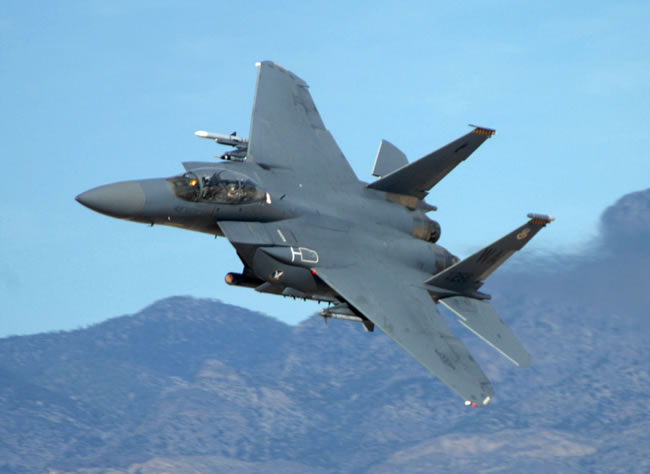

As competition to secure a $7.3 billion deal with South Korea for the Asian nation’s next-generation fighter enters its final stages, key “stealth” feature were dropped off Boeing’s F-15 Silent Eagle (F-15SE). Boeing’s F-15SE is in a tough round of evaluations as it competes with Lockheed Martin’s F-35A Lightning II Joint Strike Fighter (JSF) and EADS’ Eurofighter Typhoon to nail down a multi-billion contract with South Korea for as many as 60 fifth-generation fighters.
Back in 2009 Boeing praised the Silent Eagle’s stealth capabilities. Along with conformal weapon’s bay, canted tail fins were key stealth-enhancing features that would go far in reducing the fighter’s radar cross-section (RCS) return while also delivering slightly greater range, and much improved flight characteristics.
The canted tails would also, Boeing claimed, reduce the aircraft’s overall weight. Some industry specialists claim that the tail fins, canted outward 15 degrees, are essential in a stealth fighter design.
And now, Boeing said the canted tail-fin configuration would be offered only as an option and not a standard feature on the F-15SE. According to reports published by the Korean media, wind tunnel tests revealed the canted tail fins delivered only marginal improvement in the aircraft’s performance. (The most significant contribution of the canted tail in reducing radar reflection cannot be tested in wind tunnel)
In response to inquiries from Defense-Update, Boeing responded “Silent Eagle builds on a continuous evolution of capability in the combat-proven F-15 family of aircraft.” The company is “confident that our compliant Silent Eagle offering is best suited to address F-X requirements. Canted Vertical Tails, one of the many capability elements of the Silent Eagle, were offered as an option in our proposal to Korea…” Boeing commented.
Boeing went on to say that “our Silent Eagle offering is best suited to address F-X requirements and provides our ROK customer a highly capable, yet low-risk and affordable Silent Eagle F-X solution on a schedule that will meet the ROK requirements.” As clarification, Boeing insists that development of the canted tail surfaces was not being abandoned or suspended and the company intended to continue development efforts.
This article is part of Defense Update Premium Content. Your subscription helps us improve, develop more content and pay for more top quality editorial!
As with all things in life, cost and timely availability are also primary concerns, what makes reducing the developmental risk the F-15SE an advantage, rather than drawback for the Silent Eagle. With The F-35A is still in the developmental stages, the F-22 Raptor cannot be had, the Typhoon is no longer cutting-edge – the Silent Eagle may be the best deal on the table.

















